-
 play_arrow
play_arrow
The CRUSADE Radio Network CRUSADE Radio Network
-
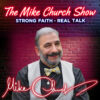 play_arrow
play_arrow
PREVIEW: Bongino and Patel Detail Progress Mike "The KingDude" Church
-
 play_arrow
play_arrow
Audio Post Format TheKingDude
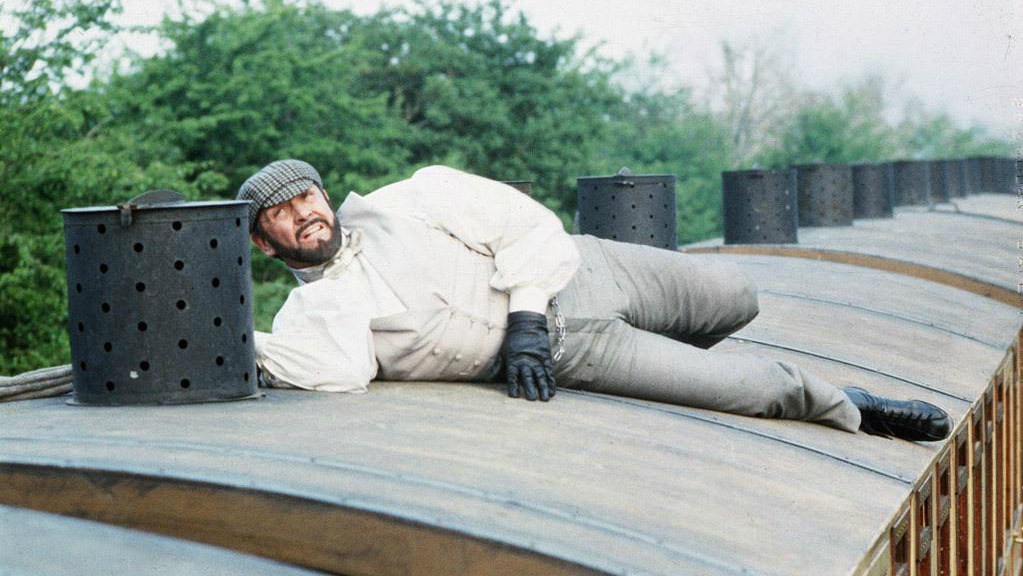
Mandeville, LA – Here are the written notes and audio from Mike Church’s address to the Saint Benedict Center’s “Keeping The Counter-Reformation Going” Conference, held at the St. Benedict Center in Richmond NH, Spet. 30 and Oct 1., 2016.
-
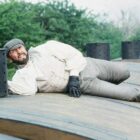 play_arrow
play_arrow
The Great Faith Robbery-The English DeFormation TheKingDude
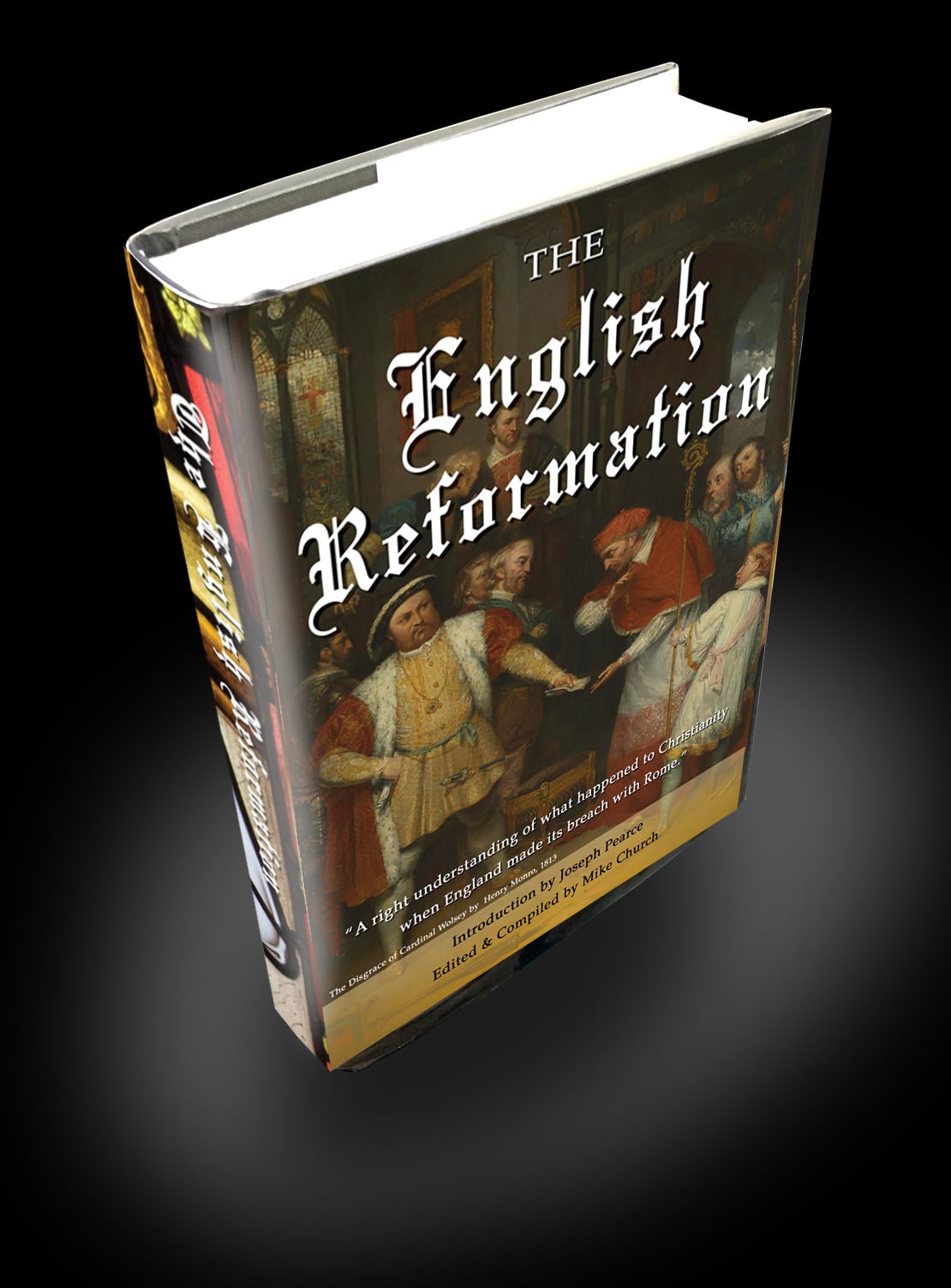
The English Deformation-The Great Faith Robbery
I wanted to start with a joke and I had a few in mind but in a conference where so many great speakers have told so many great jokes the task becomes more challenging, I mean who can top Gary Potter’s “up your’s Francis”? In considering that I toyed with “up your’s Mohammed” then “up your’s Luther” and finally settled on the fact that I’m am ecstatic that I do not have to follow “Crooked Hillary”.
Speaking of “Crooked Hillary” I read the other day that Mrs. Clinton was a “devout Methodist”. This was quite a shock! I did not know the Methodists were Sodomite coddling, baby aborting, pathological liars…. if only friar Luther could see his “reform’s” progress now, how proud he would be! We might ask the question of whether Luther or his English counterparts would vote for Hillary and we could thus begin a talk on the Counter-Reformation with the observation that it is BECAUSE of Luther & Henry that this ugliest form of government known as “democracy” has been unleashed upon the Christian world. For a hysterical view of that recall the scene from Monty Python’s “Search For The Holy Grail” movie where King Arthur is confronted by a peasant who denies his authority because he didn’t vote for him to be king. Would we really be worse off if a strange woman, lying in a pond had lobbed a scimitar at a man and made him King. The answer is yes so long as the King was not Bill Clinton and the pond woman wasn’t Hillary.
The title of my talk, in keeping with the theme of the conference , is The Great Faith Robbery-The English Deformation.
The Great Train Robbery, written by the late great, Dr. Michael Crichton and set in England, as we shall see, could not have happened, legally and morally in anything BUT a Protestant England; which is to say it could not have happened even as a work of fiction, save for it being a cautionary tale, in a Catholic England. I suppose that makes Catholics bungling thieves but better to be bungling at criminal sin than pridefully accomplished at it as so many are today. In the movie version starring Sean Connery, Leslie Anne Downe and Donald Sutherland, four keys must be temporarily stolen so copies can be made. These keys will then open the twin safes on the train containing the gold bar payroll, bound for Crimea then France, to fund the ongoing war.
Dante would be proud of the vices employed to steal the keys: pride, lust, greed, injustice, lust then for good measure, sloth. As we shall see, the same vices will be employed in The Great Faith Robbery only the consequences will not cost a few dozen bars of gold but rather a few hundred million souls. To give the ending away, nothing about religious worship in England was “reformed” during this detestable epoch but it was most certainly and remains “deformed”. The English Deformation was a top-down coup de grace, executed with illegitimate, lethal, royal power, by the House of Tudor against the then Catholic, English people.
In preparing this talk I spent a day trying to find out whether Dr. Chrichton had any religious affiliation and like any successful famous person who humbly keeps to themselves, all the usual suspects claim him as their own, but I could find no direct link between Crichton and a religion save for analyzing his work which could be easily identified as Catholic. Fort our talk today this does not matter but I cannot help but be encouraged to know that Crichton’s subtle denouncement of Darwinism in Jurassic Park and the fitting end most greed seekers met in Congo tilt him toward the Shakespeare side of what used to be called The Index.
But, contrary to urban legend it wasn’t always that way in fact for a majority of her existence England was actually a Catholic country and in some ways more Catholic than even Rome herself. As a brief telling of the early Catholic history of England will show, from nearly the time of the Apostles being dispatched to convert the pagan world, England responded in the affirmative and with great reverence and Grace.
Those who are familiar with my republishing of Father Gaetano de Bergamo’s “Humility of Heart” will be familiar with it’s English translator, Herbert Cardinal Vaughan. It is from a work by Abbot Gasquet, that bears Vaughan’s 1903 Imprimatur that we find a moving account of early England’s history. The history would come as a shock to Britons who fancy themselves fashionable defenders of the indefensible Darwin heresy and thus descended from uncivilized primates; today’s churchmen excepted, they actually are descended from quite holy prelates.
Today we think of England as either the hive from which well spoken, tea sipping snobs are bred or as the land where public print-media features soft-core pornography and filmed media details hardcore heresies…with great joy. But it wasn’t always so. Let me explain my personal experience in two trips to Scotland.
• Never saw a single crucifix or picture/painting of Our Lady, a saint or of our Lord.
• Met a theology, masters degree pursuing student who knew no theology and what she did know wasn’t theology.
• Almost impossible to find a Catholic Church to attend and the same is true for Protestant ones.
• On our guided tour trip, Sunday was treated with the same Holy reverence as Tuesday.
• The magnificent cathedrals of the midieval times either lay in ruins or have become flea markets and swap shops.
English folklore holds that England was converted shortly after our Lord’s death by St. Joseph of Arimathea who brought the Holy Grail of Christ’s Last Supper to the island but I doubt today’s “Christians” could distinguish St Joseph or Arimathea from British actor Joseph Fiennes. It is more likely that a story told by St. Bede captures the beginning of Catholicity in England.
“Lucius, king of Britain, sent to Pope Eleutherius in the year A.D. 157 “praying to be made a Christian by an act of his authority”; and how, upon his petition being granted, his messengers were instructed in the faith and baptised. One of them, Elf an, it is said, was consecrated a
bishop, and another, Medwy, a doctor, or teacher. The ancient devotion of the Welsh to this King Lucius and to his messengers, as well as to the two Italian missioners Damianus and Fugatius, who are said to have been sent by the Pope at this time into England, would seem to testify in some measure to some substantial truth in this legend.”
The 4 Keys of Great Faith Robbery
• Lust
• Pride
• Property
• Justice
• LUST – Custody of eyes, most Catholic men practice custody of their eyes-most Protestant men practice custody of their wive’s eyes.
One cannot imagine the parishioners of Bells of St Mary’s cheering the robbery of the Bailey Savings and loan, or sister Mary Benedict. being tempted by Connery’s charms so the keys to the school safe can be stolen.
• PRIDE-In one scene Sean Connery is asked why he wants to rob the train and he responds “because it is there and they say it can’t be done.
• JUSTICE – Communicative Property & Distributive Property, the communicative deprives the train company of its gold and the distributive deprives the public of justice after Connery is convicted of the crime but escapes, to the approving wails of the Protestant gallery.
Ad lib on the movie and how it could not be made in Catholic England or for Catholic audiences.
How did all this then come about in what is now a totally secular country: The “United Kingdom”? Quite simply, the sins of LUST, PRIDE, PROPERTY & INJUSTICE commited by Henry VIII and his his wicked, bastard child Bloody Bess.
• Ad lib on the English Reformation book and dedication to Fr. Gerard Culkin.
In 13, concise chapters, Fr. Culkin exposes Henry & his conspirators for the Great faith Robbery all the West and indeed, mankind is paying for today. In the prime chapter Fr. begins:
The history of the Reformation in England is long and complicated. The stages by which Catholic England became—of cially—a Protestant country occupy a full thirty years, from 1529 to 1559. The story begins in the year 1529 when Henry VIII, anxious to be rid of his wife, Catherine of Aragon, so that he might marry Anne Boleyn, realised that Pope Clement VII would not be bullied into pronouncing his marriage invalid. In the following years Henry, who was determined to have his own way, abolished the power of the Pope in England and declared himself to be head of the Church. Under the rule of Henry’s son and successor, Edward VI, a child of nine when he became king in 1547, the religious revolution was carried a stage further. The government of the day—a band of unscrupulous adventurers who ruled in the name of the boy king—completely transformed the Church’s belief and worship.
In less than six years—from 1547 to 1553—the Mass was abolished, the altars destroyed, the sacraments reduced to two, and a new liturgy, a new profession of faith and a new form of worship were imposed on the country; while the Church itself was robbed and pillaged to the pockets of these so-called reformers. Henry had fought the Pope and persecuted both Catholics and Protestants. Under his son foreign Protestants swarmed into the country. They were given the chief teaching posts in the universities, and it was by their advice that the religious revolution was accomplished. All this was done by a party. The English people, and the English Church, were never consulted. Those who opposed this “reform” ended up in the Tower or on the scaffold.”
I don’t have time to go into all the details but I’d like to continue from the book to dispel some urban legends about the English DeFormation. e.g. The “liturgy” of the “Anglican Mass” is sad to have been approved by consecrated Bishops at a synod. As Fr. Culkin informs us:
“FThe Protestant leaders of the nation drew up an of cial statement of the new of cial religion—the Forty-Two Articles of Religion, which were approved by Edward only a week or two before he died. The title page of the Articles states that they were “approved by the Synod of London”. This is untrue.1. They were simply imposed by the government—as indeed was the whole of the Reformation settlement of religion. With this last act we can say that all the measures by which the Catholic faith of England was—of cially and legally—abolished were completed.
In my own research I discovered the fraud that was perpetrated by digging up an 1876 work by Chrales Hardwick M.A.:
“A third and far more cogent reason for disputing the synodical approbation of the Articles is furnished by the language of Cranmer and Philpot, when questioned on this very subject at the opening of the reign of Mary. It has been already noticed, that when the Articles were completed in the spring of 1553, they were made public in a separate form and also in the company of a certain “Catechism.” Now, in reference to this second work, complaints were made by Weston, the prolocutor of the southern Convocation, which assembled in the following autumn, to the effect that “it bore the name of the honourable synod, although, as he understood, put forth without their consent, Philpot, who was present as archdeacon of Winchester, explained at some length in what way “it might be well said to be done in the Synod of London,” although the members of the present house “had no notice thereof before the promulgation.” He seems to have imagined that when the clergy authorised certain persons to make ecclesiastical laws,* they had transferred their own synodic rights to this committee. But Cranmer in his “Disputation at Oxford” in April, 1554, appears to have supplied a somewhat different, if not contradictory, solution. When charged by Weston with publishing “a Catechism in the name of the synod of London,” he answered: “I was ignorant of the setting to of that title;
and as soon as I had knowledge thereof, I did not like it; therefore, when I complained thereof to the Council, it was answered me by them, that the book was so entitled, because it was set forth in the time of the Convocation.’’ Both these testimonies sanction the hypothesis that the Catechism in question had never been regularly submitted to a synod of the southern province, much less approved and authorised by the two houses: and therefore, if the Articles are necessarily implicated in the disclaimers here adduced, we are compelled to acquiesce in the idea that they also had been put in circulation by the royal Council, with no formal approbation of the Church at large.”
On to more urban legend destruction and the Great Faith Robbery. Let’s deal with the claim that Mary Tudor aka “Bloody Mary” was a demonic martyrer of Protestants. As Linda Porter wrote in her epic work The Myth of Bloody Mary:
“The responsibility for the continuance of such a policy [burning at the stake for heresy] has been widely debated. John Foxe, writing in Elizabeth’s time, tended to exonerate Mary herself. He laid the blame for the inception of the idea with Gardiner and believed that its continuance, after Gardiner’s death, was the work of Pole and Bishop Edmund Bonner of London. In this reading of events, the queen is sincere but ill advised; terrible things are being done in her name, but she is not directly involved. Yet though the business of government placed many demands on Mary’s time and attention, the fact remains that she could have stopped the burnings with a simple order to desist. She did not do so because of the nature of the crime. Mary could never condone heresy. It was an affront to her conscience and that conscience had guided her actions since she was 17 years old. For her, extending any kind of mercy to these deluded sinners was unthinkable.
Many of them wanted her dead, or, at least, dethroned. The queen understood well the power of the writ- ten and spoken word, but not the even greater propaganda victory that came with martyrdom. There could be no middle course, no bargaining with such error. She would have seen this as negotiating with the devil. In mid-16th-century Europe the idea of respecting another person’s beliefs would have provoked incredulity. Such certainties bred oppressors and those who were willing to be sacrificed. Mary herself had said she would die for her faith during Edward VI’s reign. There is no reason to doubt her.”
And who was it that propagated this urban legend. Well it was the Protestants who had mastered the art of religious propaganda and through the printing press, specifically the notorious John Foxe. Listen to Jean Marie Stone, Studies on Court & Cloister, in 1905 wrote the following about Foxe’s scholraship on the Protestant martyrs.
“No more potent means could have been devised for saturating the national mind with the principles of the Reformation than the diffusion of the Book of Martyrs on this gigantic scale. In a few years there was scarcely a parish church in England that did not possess a chained copy of the work. The illiterate might frequently be seen standing in a group round the lectern while one among them better instructed than the rest read to them aloud its graphic and lying legends. Added to this, in many churches a chapter was read to the assembled congregations every Sunday evening along with the Bible, and the clergy constantly made its dubious martyrdoms the subject of their sermons… the Rev. John Gerard 2 has been at the pains of collecting the learned historian’s remarks on Foxe’s compilation. He says : — “ But more damaging than any other is the criticism which Foxe receives at the hands of Mr James Gairdner, the fullness of whose knowledge is matched only by the the Rev. John Gerard has been at the pains of collecting the learned historian’s remarks on Foxe’s compilation. He says : — “But more damaging than any other is the criticism which Foxe receives at the hands of Mr James Gairdner, the fullness of whose knowledge is matched only by the judicial manner in which he deals with the martyrologist’s stories as he encounters them in his own history. Discussing each case on its merits, and giving full weight to the evidence on either side, Mr Gairdner finds charges of untruthfulness and dishonesty established at every turn. Foxe, he declares, ignores or misrepresents evidence that tells against him [p. 38] ; he manipulates it to suit his purpose [56] ; he counts as martyrs offenders of all kinds [12on]; he ‘was above all things credulous’ [131] ; he tells stories, the falsehood of which may be gathered from his own relation [ibid] ; he suppresses facts furnished by the authorities upon whom he draws [133]; he insinuates what is utterly false [135]; he evidently wishes his readers to under- stand what he does not venture openly to say [220-21]; he prejudices readers by irrelevant gibes [271]; he has made people believe what is untrue [333] ; he was quite as prejudiced and unfair as the notorious Bishop Bale [342] ; his narrative has been exposed as untrustworthy by reason of its bias, but has not even yet been subjected to complete and thorough criticism [352]. In consequence of all this, says Mr Gairdner, Foxe has given a false colour to the history of the times, and especially to the sentiments and motives of the persecutors.”
Again, were there Protestant martyrs yes (and lib)…
•Ab lib on the English Catholic martyrs, mention a few then pass out the drawing and translate it, possibly created by the Jesuits.
The following is the description of Edmond Campion’s gruesome execution.
A: “Edmund Campion of the Society of Jesus preaches under the gibbet, and immediately thereafter is hung with his compan- ions Fr Alexander Briant SJ and Fr Ralph Sherwin.”
B: “After they are laid down their heart and entrails are extract- ed, and cast into the re.”
C. “Their members are boiled in boiling water, then hung on the towers and gates of the city in the reign of Queen Elizabeth in the year 1581 on the first day of December. Several thousands of these men were steadfast in death for having converted to the Roman Church.”
So there never was the equivalent of what we would call a council and even if there was it never met for the purposes the Deformers claim, i.e. THEY JUST MADE IT UP.
• In this talk we should now reeturn to the heresies of friar Luther and to do that, I’d like to quote A HISTORY OF THE CHURCH To the Eve of the Reformation. by Monsignor Philip Hughes (1895-1967) was a Roman Catholic priest and Catholic ecclesiastical historian.[1] He taught post-graduate courses at the University of Notre Dame, written in 1903, when Notre Dame was still a Catholic university. Hughes summarizes the Great Faith Robbery visited upon the entire of Europe then the planet, by friar Luther.
“For the many terrible evils from which Christian life was suffering, Luther brought not a single remedy. He could do no more than exhort and denounce and destroy. There was the problem of clerical worldliness: Luther, heir to the long line of faux mystiques for whom clerical ownership was sinful, abolished the cleric altogether. There was the problem of the scandal caused by rival philosophies and the effect of the rivalry on theology and mysticism: Luther, again the term of a long development, drove out all philosophy, and theology with it. The very purpose of the intelligence is knowledge, to enquire is its essential act: but in the sphere of all but the practical and the concrete and the individual, Luther bade the Christian stifle its promptings as a temptation and a snare; once again Luther is not a pioneer in the solution he offers. There was the problem of the Church itself; how it could best be kept unspotted, despite its contacts with the world: Luther’s solution is to abolish the Church.
All those anti-intellectualist, anti-institutional forces that had plagued and hindered the medieval Church for centuries, whose chronic maleficent activity had, in fact, been the main cause why — as we are often tempted to say — so little was done effectively to maintain a generally higher standard of Christian life; all the forces that were the chronic distraction of the medieval papacy, were now stabilised, institutionalised in the new “reformed” Christian Church.
Luther’s own special contribution — over and above the key doctrines which set all this mischief loose — is the notion of life as radically evil.”
In concluding the Great Faith Robbery, let’s return to Fr. Culkin for his final word on the matter (plug for the book at mikechurch.com).
“The true story of what happened in England at the Reforma- tion was for long obscured by the of cial propaganda put out to conceal the violence and trickery by which that revolution was accomplished; and for generations people in England could learn of these events only from the of cial history which was based on that propaganda. That day is now past. Today the record is plain for all to read, in the work of scholars whose sole interest is to nd out what happened in history.
There would indeed be no suf cient reason for recalling the story of these tragic days if no other end were served than to rekin- dle ancient animosities and religious passions. But if that story be a necessary basis for understanding the truth, then to tell that story is a duty which can not be shirked. There are many people in England today to whom the claims of the Catholic Church seem absurd or exaggerated. Yet no one can fairly claim to have exam- ined that Church’s claims who has not attempted to understand what it was that happened in England at the Reformation.”
Thank you very much and God Bless.
Written by: TheKingDude
Similar posts
Featured post
Latest posts
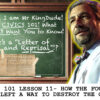
The War Power To Take Out Cartels: Letters of Marque & Reprisal-Mike’s 2014 LPAC Speech
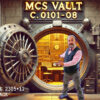
Brad Birzer and Winston Elliott Discuss “A New Dark Age”

Trump Should Read Thomas Jefferson’s First Inaugural Speech

Kamala Harris: The Shape Of Modern Evil, A Halloween Commentary
Mike Church Show- Review of 2016 Al Smith Dinner That Invited Killary
Current show
Upcoming shows
Mike Church Show Weekend Best Of
12:00 am - 11:59 pm
Condimentum Elit
11:40 pm - 11:55 pm
Chart
HERE IT GOES YOUR COPYRIGHT TEXT. CAN ALSO CONTAIN LINKS LIKE THIS





Post comments (0)